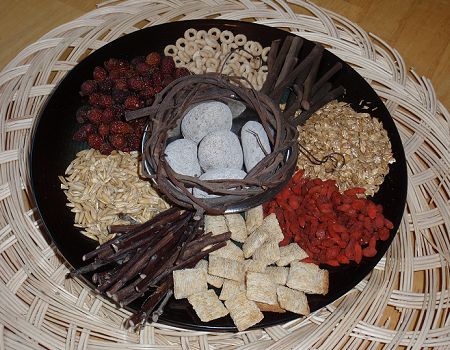For the month of July, two (2) chinchillas were surrendered and two (2) chinchillas were adopted. Last month we turned away a whopping 19 requests for surrender! We've found that our adoptions have dropped sharply since our lawyer stepped in to give our contract more "bite". So we're looking in to softening the rules at bit. Watch for upcoming changes in our contract and please, spread the word about adopting recycled pets.
Now, for those of you who already own a chinchilla or several, let us challenge your knowledge. We never take seriously those who claim to be long term chin owners. We have learned the hard way that radically different degrees of knowledge exist within the small subculture of those who own chinchillas (or any other animal for that matter). The internet is full of misinformation. We hope to dispel some myths and give good, sound reasons for our advice.
With that being said, we received an interesting email from someone this week who erroneously believed that vine chew toys were "treats". In a nutshell (no pun intended) a "treat" would be any food item that a chinchilla would not normally find in abundance in their natural habitat.
A chinchilla's natural habitat is high desert. Desert is a biome that simply refers to the degree of precipitation, not degree of heat! A desert biome grows vegetation that is high in fiber with very little moisture. So a chinchilla diet should also be high in fiber, low protein, with practically zero fats and sugars. If your chinnie is getting plump off of high sugar/ high fat treats, you run the risk of killing it with kindness by contributing to fatty liver disease. If you choose to purchase processed treats, at the very least be cognizant of the ingredients list! The closer to single ingredient items you can give, the better. The infamous pet store fare (certain flower-type green disks) generally contains a list of ingredients that clearly is NOT healthy for your pet.
With this in mind, we've made a handy-dandy food pyramid to show you the types and amount of foods your chinchilla should have. We would strongly prefer nothing from the uppermost level of the pyramid. This is the "treat" section. But if you must, remember: the smaller the section of the pyramid equals offering smaller amounts to your chin.
The largest section at the bottom contains a list of food items that your chin can eat without restriction and is actually naturally healthy for them. Items from the lower portion of the list can excite your chin as a healthy alternative to treats if you hand feed them. It's all in the mindset. We know of one person whose chins get excited about wooden clothespins! So study the list, be smart and enjoy!










